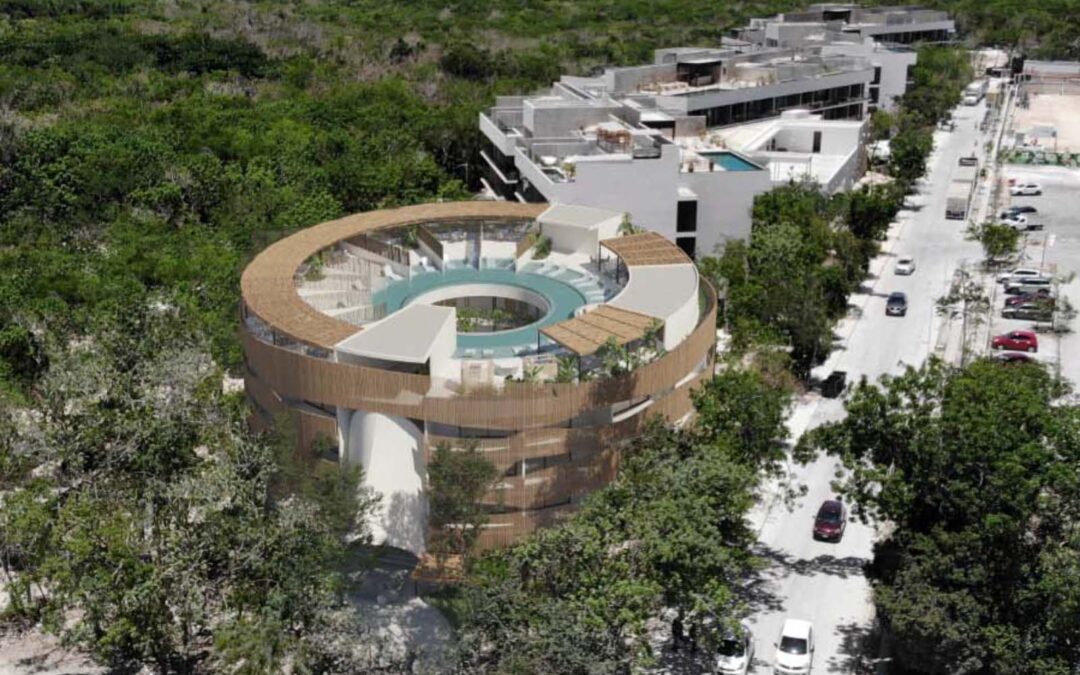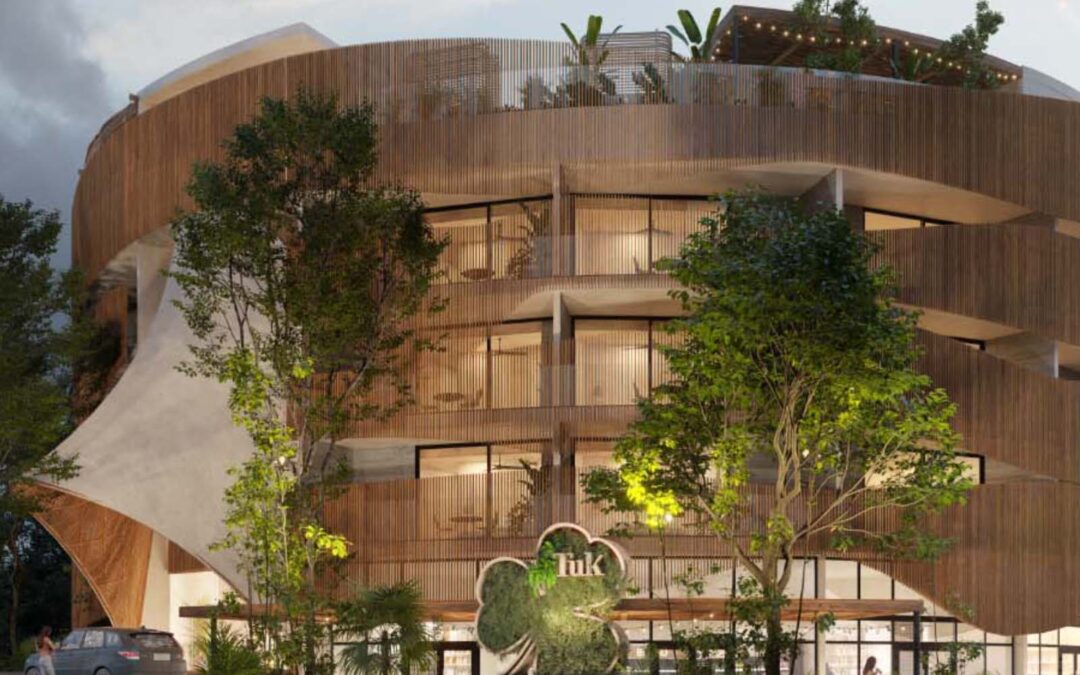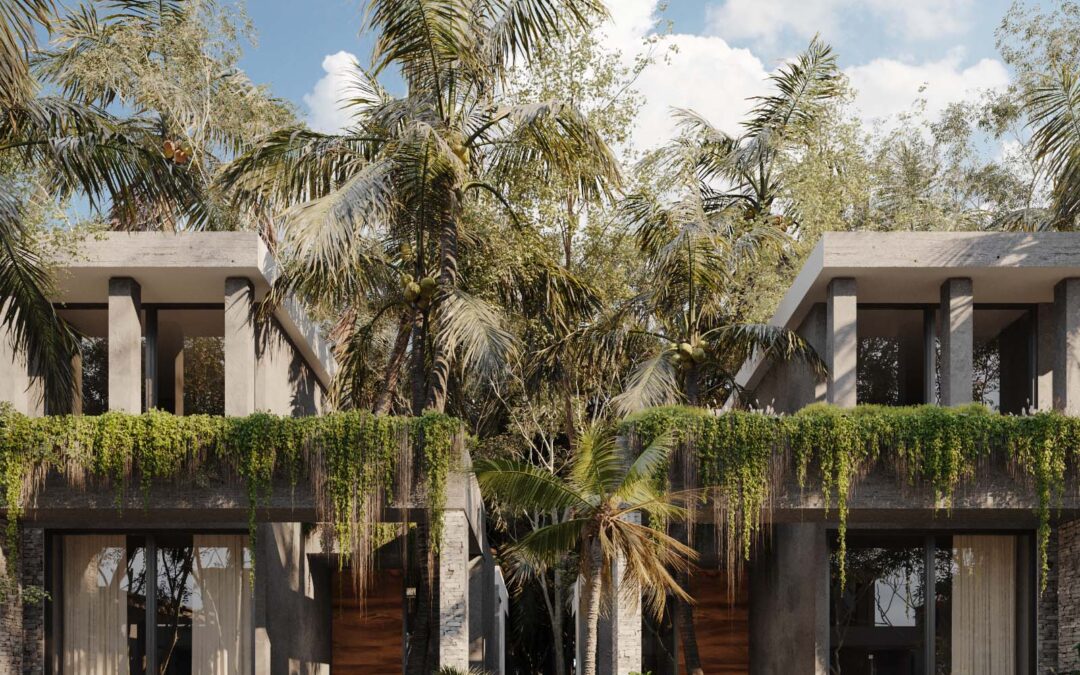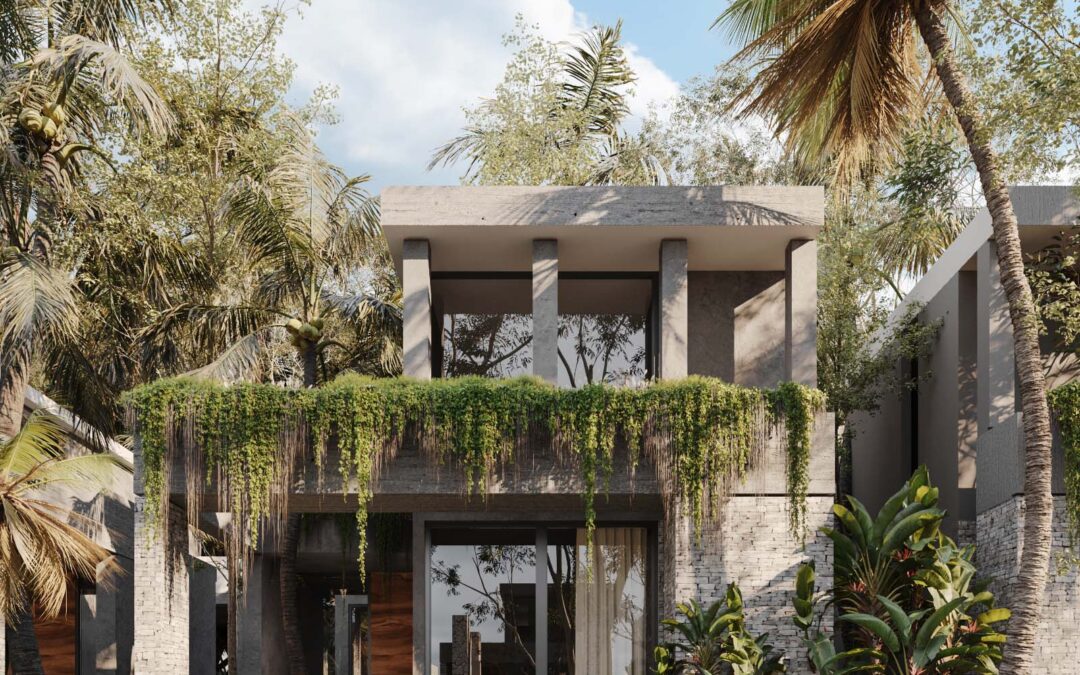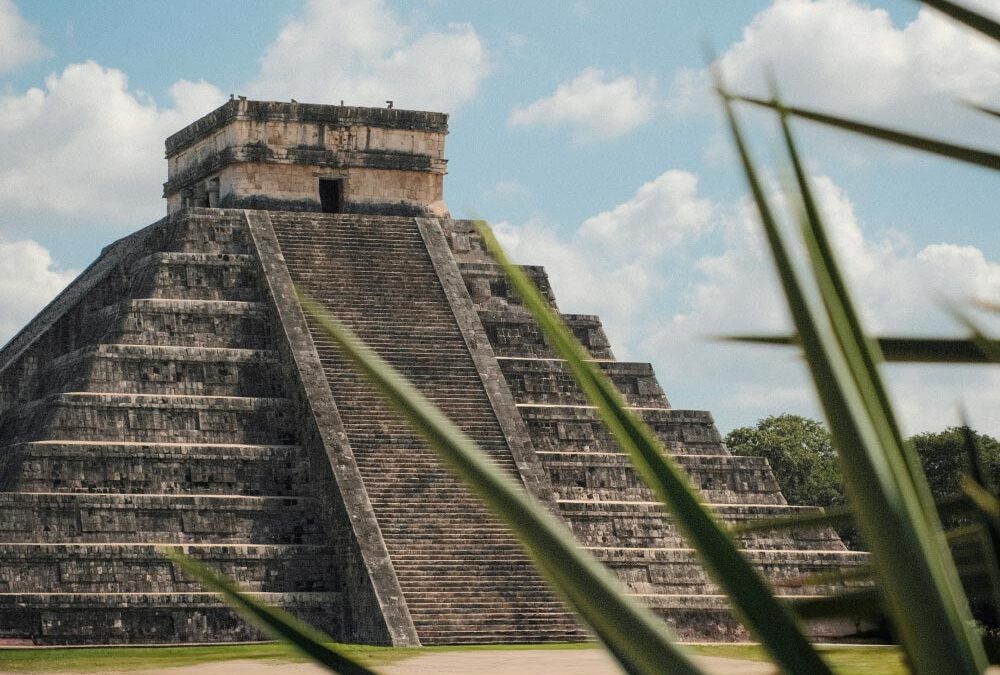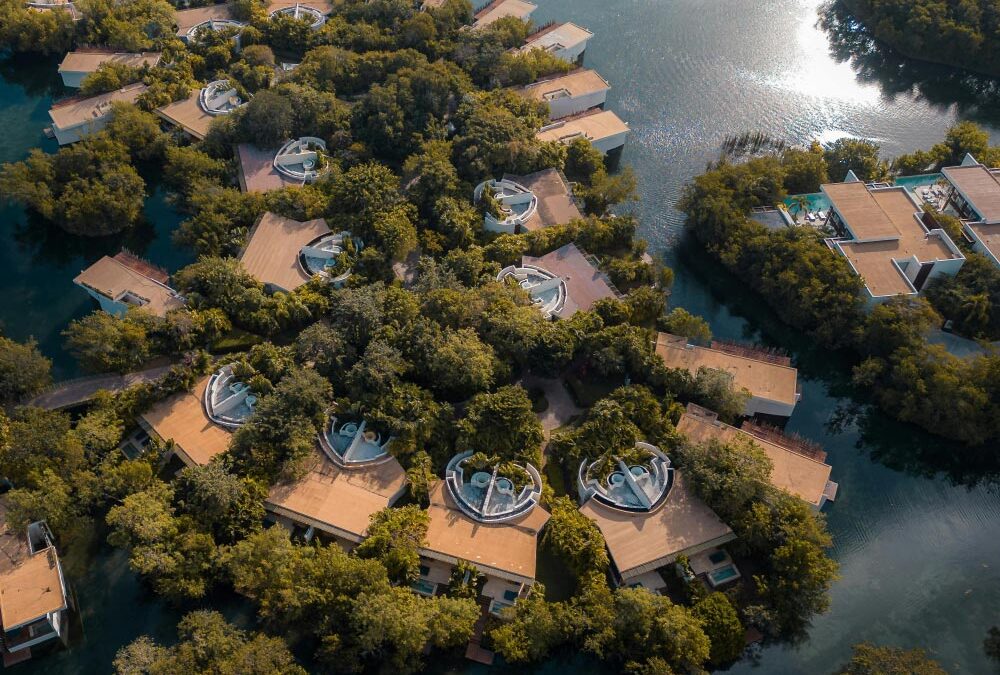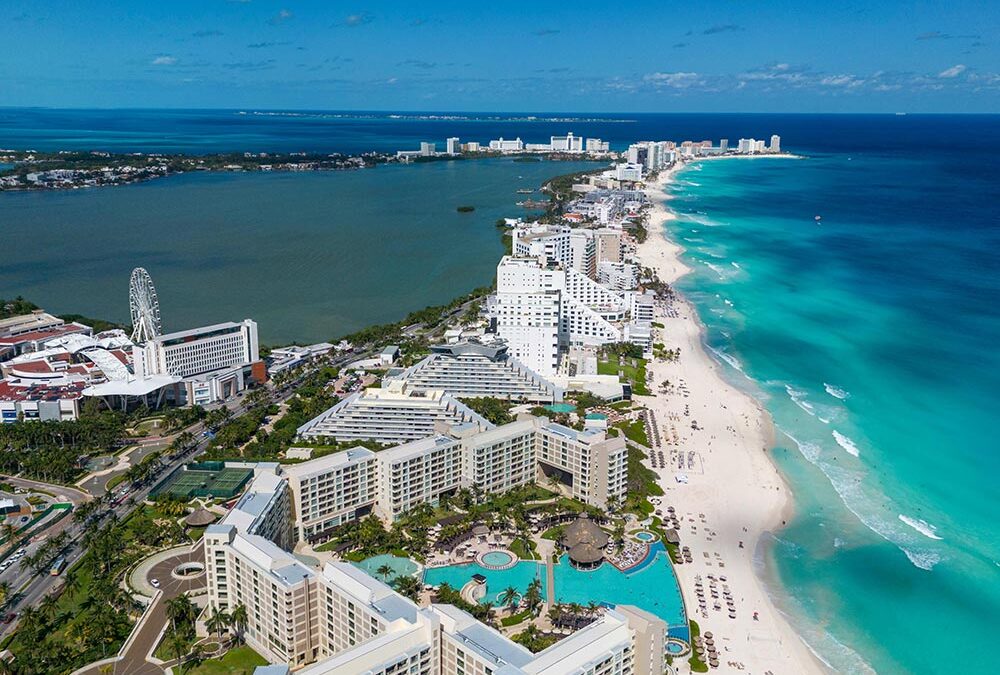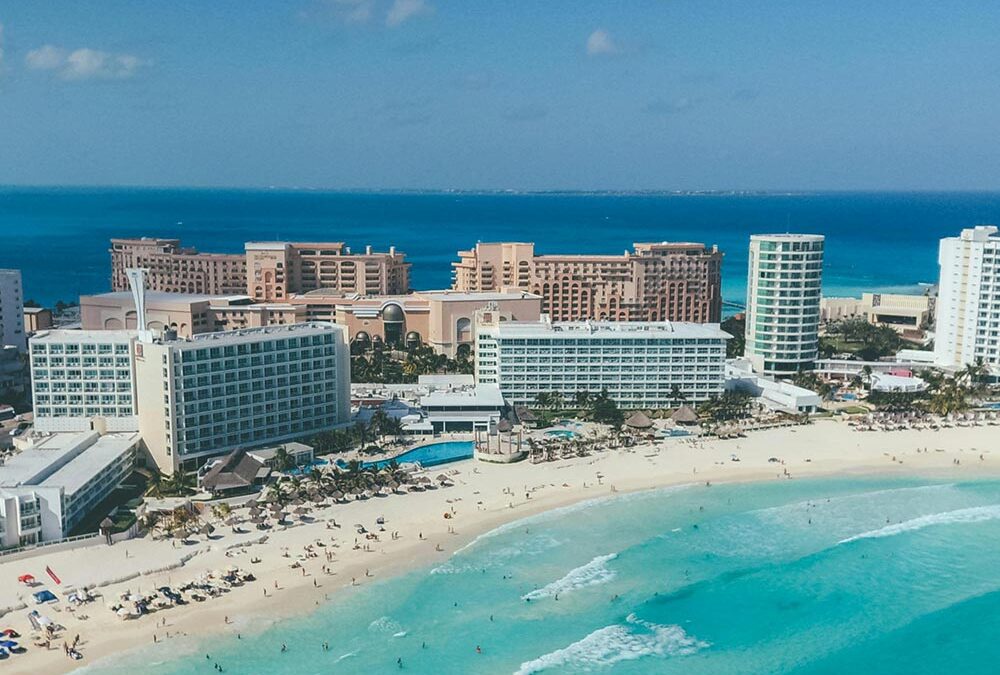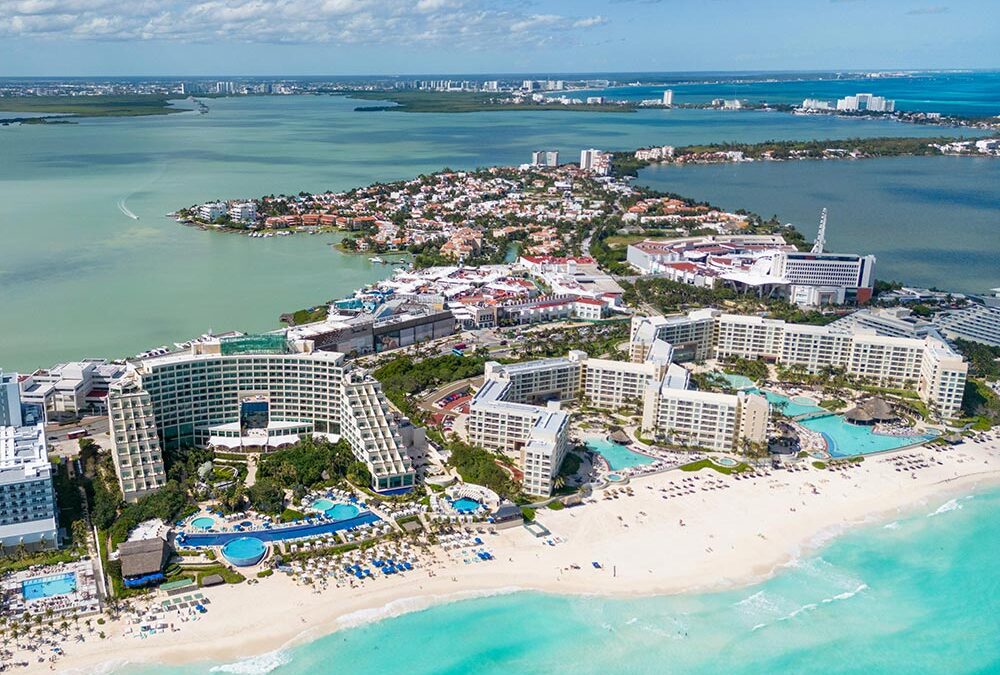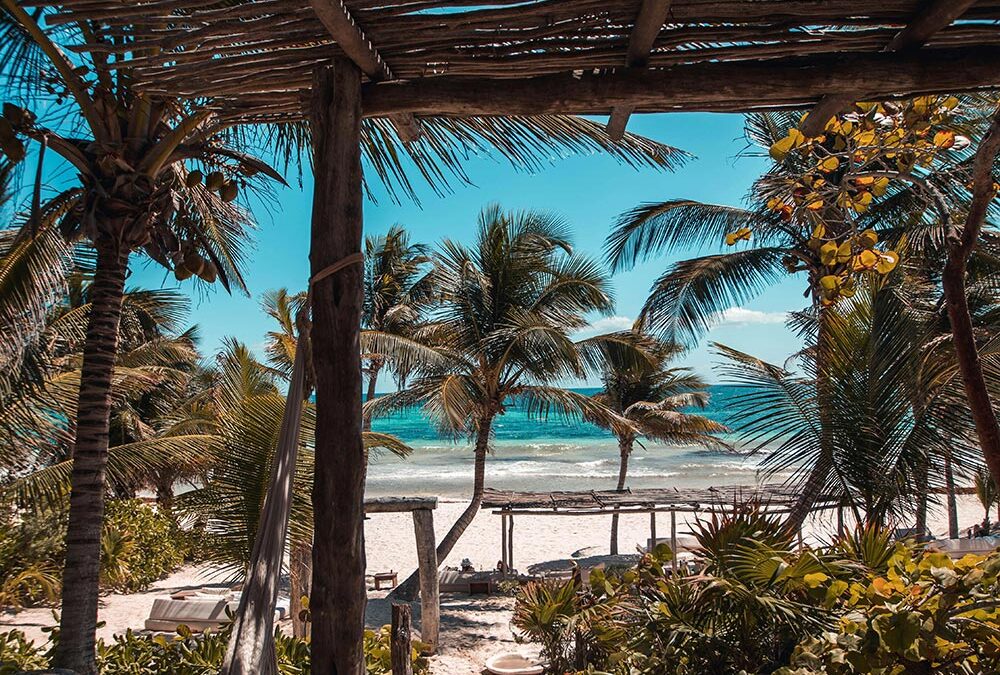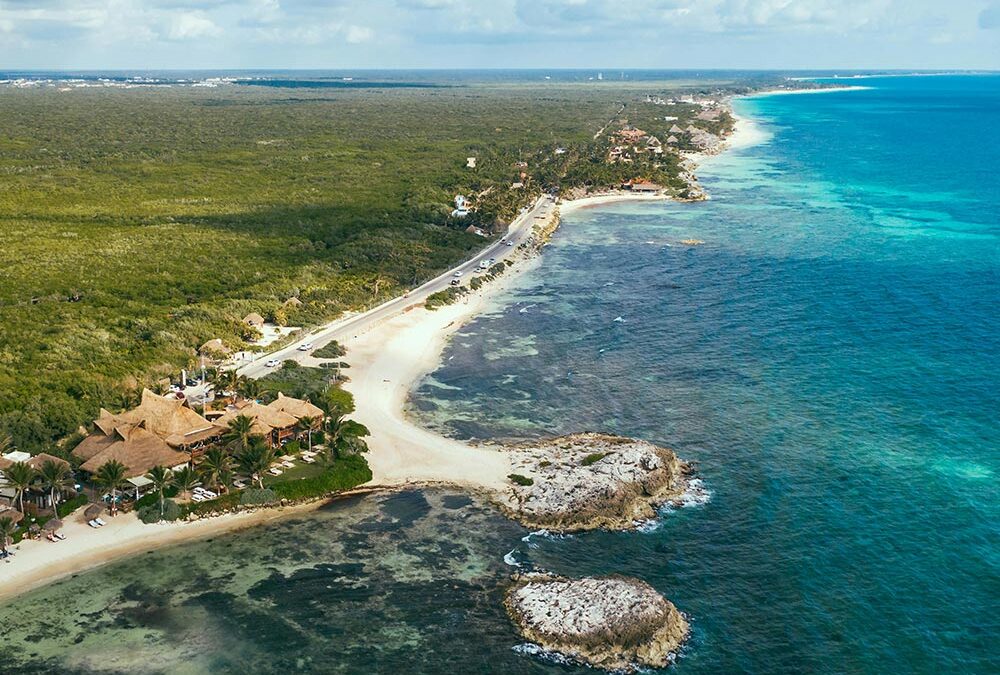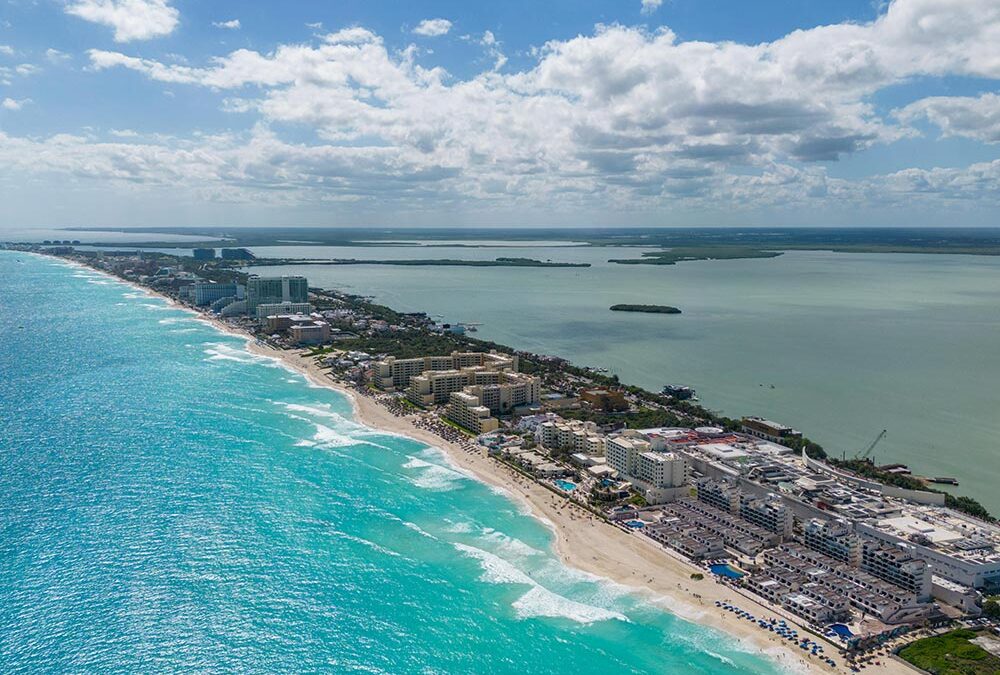Stock market fluctuations are an inherent part of investing in equities—prices surge one day and plummet the next, dictated by a dizzying mix of economic indicators, corporate earnings reports, and investor sentiment. While the stock market can deliver respectable gains over time, the unpredictability of these swings can be unsettling, especially for individuals seeking a more stable alternative. Enter Tulum, a charming coastal town on Mexico’s Yucatán Peninsula that has steadily emerged as a real estate hotspot driven by its vibrant tourism scene.
Tulum’s real estate market has flourished on the back of booming eco-friendly developments, high-end resorts, and a continuous influx of international visitors. By offering a mix of robust property appreciation and reliable rental income, Tulum properties have drawn investors looking to escape the rollercoaster of stock price volatility. In addition, municipal and federal infrastructure projects—such as planned airport expansions and improved transportation networks—provide tangible evidence of long-term growth potential, further enhancing Tulum’s investment profile.
This article presents a deep dive into Tulum’s tourism-driven real estate sector and its advantages over the sometimes erratic performance of the stock market. We will cover market fundamentals, factors supporting Tulum’s stability, financing strategies, risk management techniques, and future growth outlook. A case study will also illustrate how one investor capitalized on Tulum’s rising appeal to achieve steady returns. In the end, you will see why Tulum real estate offers a sense of ‘peace of mind’ compared to unpredictable stock market cycles.
Index of Content
- Tulum’s Real Estate Landscape: The Big Picture
- Understanding Stock Market Volatility
- Tulum’s Tourism-Driven Stability
- Financing Strategies & ROI in Tulum
- Risk Management & Future Outlook
- Conclusion
- Case Study
- FAQs
Tulum’s Real Estate Landscape: The Big Picture
From Rustic Town to Global Destination
Once an under-the-radar retreat known primarily to backpackers and adventure travelers, Tulum has swiftly risen to international prominence. Tourists worldwide now flock to Tulum not only for its crystalline waters and powdery white sands but also for its eco-chic resorts, fine-dining scene, and the chance to explore ancient Mayan ruins. Alongside this tourism boom, private developers and government agencies have invested heavily in infrastructure, improving roads and utilities while ensuring new construction aligns with Tulum’s natural aesthetics and environmental sensibilities.
Thanks to these transformative efforts, Tulum has become an in-demand real estate market within the broader Riviera Maya region, outpacing more established destinations like Cancún and Playa del Carmen in terms of property value growth. Investors can choose from an array of options, including pre-construction condos, boutique hotels, villas, and commercial properties. This diversity enables individuals to tailor their investments to suit personal preferences, be it short-term vacation rentals, long-term leases, or appreciation-focused strategies.
- Seek properties in close proximity to Tulum’s beach zones or downtown area for optimal visibility and rental demand.
Understanding Stock Market Volatility
Why Equities Can Be Unsettling
The stock market is shaped by various forces: corporate earnings, economic data, interest rate policies, and investor sentiment all converge to drive share prices. Although broad market indices like the S&P 500 or NASDAQ typically produce annual returns averaging 7% to 10% in the long run, short-term volatility can be significant. Geopolitical events, recessions, or shifts in consumer confidence can trigger sudden market corrections or even prolonged bear markets, eroding portfolio values in a matter of weeks.
For risk-averse investors or those relying on stable returns—such as retirees—this turbulence can be taxing. Emotional reactions often lead to premature sell-offs, locking in losses and missing out on eventual rebounds. While equities have historically proven lucrative over multi-decade horizons, the psychological stress and unpredictability of market swings prompt many investors to seek alternatives with steadier trajectories.
Comparing Stock Dividends to Rental Income
Dividend-paying stocks are an attractive option for those looking to supplement income streams. However, dividends are not guaranteed; companies may reduce or suspend them to preserve cash during economic slowdowns. On the other hand, Tulum’s tourism-centric market paves the way for consistent rental demand, especially during high travel seasons. Well-managed properties can generate net rental yields between 5% and 10% annually—often outperforming average dividend yields of 2% to 4% on large-cap stocks.
Moreover, Tulum rental rates often benefit from a premium driven by the area’s international reputation. Visitors are willing to pay higher nightly rates for properties with unique architectural design, eco-friendly features, and proximity to beaches or cultural landmarks. These factors can offer an ongoing, predictable income stream, even as stock dividends fluctuate or vanish altogether due to corporate decisions.
Tulum’s Tourism-Driven Stability
Resilience Through Global Tourism Trends
What makes Tulum especially appealing is its resilience in the face of global economic shifts. While a worldwide recession or a crisis can hamper international travel, Tulum’s unique position as a luxury yet eco-conscious destination often helps it bounce back faster than other markets. The consistent popularity of Riviera Maya has enabled Tulum to weather disruptions and continue attracting significant tourism flows. In fact, government statistics recorded annual tourism growth of up to 11% in the Riviera Maya region over the past five years, even amid fluctuating global conditions.
Another significant advantage is Tulum’s brand value. Known for blending natural splendor with upscale amenities, Tulum sees many repeat visitors who are loyal to its laid-back yet sophisticated lifestyle. This brand identity has led to ongoing demand for high-quality properties, and with limited developable land near prime beaches, price appreciation is likely to remain steady. Overall, the local tourism-driven real estate market exhibits far fewer wild swings than equities that respond swiftly to global headlines.
- Invest in properties featuring amenities like private pools or eco-conscious designs to capture premium rental rates.
Supply, Demand, and Market Growth
Tulum’s real estate boom is underpinned by a healthy supply-demand dynamic. Demand consistently outpaces supply, particularly during peak travel seasons from November through April, and again in the summer holidays. Many travelers book months in advance to secure prime accommodations, reflecting the scarcity of high-quality options in certain areas. Developers who can align their offerings—be it luxury condominiums, boutique hotels, or mixed-use commercial spaces—with traveler preferences tend to capture both steady occupancy and strong property appreciation.
Research from local property agencies indicates that Tulum condos in emerging neighborhoods can appreciate at rates of 8% to 15% per year, depending on factors like location, build quality, and brand reputation. Combined with robust rental yields, these appreciation figures lay a foundation for total returns that may surpass common stock market benchmarks in both income generation and long-term value growth.
Financing Strategies & ROI in Tulum
Developer Financing for Pre-Sales
One appealing aspect of Tulum real estate is the prevalence of developer financing for pre-construction or pre-sale properties. Investors often have the opportunity to secure ownership with down payments as low as 30% to 40%, spreading out the remaining costs over the construction period. While interest rates on developer financing can be higher than conventional mortgages, the streamlined approval processes and lower equity requirements make it an attractive option for individuals looking to enter the market more quickly.
These financing arrangements can significantly boost ROI, particularly if you purchase at pre-sale prices. Properties sold at $220,000 during pre-construction may rise to $260,000 or $280,000 once completed, delivering instant equity gains. With prudent rental management—through Airbnb, Vrbo, or local agencies—investors can capitalize on Tulum’s strong tourism demand while servicing the financing costs, often ending up with substantial net cash flow.
- Clarify developer financing terms and ensure they are locked in contractually to avoid sudden changes in interest rates or payment schedules.
Cross-Border Mortgage Options and Expected Returns
Beyond developer financing, foreign investors can explore cross-border mortgage solutions through Mexican banks or international lenders. Interest rates typically vary between 5% and 9%, influenced by credit scores, loan terms, and currency exchange considerations. Though navigating a mortgage process abroad can be more complex, securing a lower interest rate helps improve net returns over the life of the investment.
Overall, Tulum real estate often delivers combined annual returns—rental income plus appreciation—exceeding 15%, contingent on property quality, effective marketing, and operational management. This steady growth frequently compares favorably to the unpredictable peaks and troughs in the stock market. For many buyers, knowing that their investments are tied to tangible assets in a flourishing tourist destination fosters a stronger sense of security.
Risk Management & Future Outlook
Identifying and Mitigating Potential Pitfalls
No market is entirely immune to risks, and Tulum real estate is no exception. Project delays, developer insolvency, or adverse regulatory changes can pose threats to the steady growth pattern. A key risk management strategy is to thoroughly vet developers—examining their track record, financial stability, and reviews from previous buyers. Foreign buyers should also engage experienced, bilingual attorneys who can guide them through legal structures like the bank trust (“fideicomiso”) required for property ownership within Mexico’s restricted coastal zones.
Moreover, external events—like macroeconomic downturns or global health crises—can temporarily reduce travel rates. However, Tulum’s advantage lies in its established brand as a high-end, eco-friendly destination. These unique selling points help cushion the market even during challenging times, as was evidenced by Tulum’s relatively quick tourism recovery compared to some mass-market destinations. Prudent investors diversify by owning multiple property types or by spreading investments across different neighborhoods, thereby further minimizing localized risks.
- Engage professional property managers with proven experience in Tulum’s dynamic rental market to maintain high occupancy rates.
Infrastructure and Growth Projections
Tulum’s long-term prospects are bolstered by ongoing infrastructure developments, such as planned airport expansions and the Maya Train project designed to link key sites across the Yucatán Peninsula. These enhancements are expected to ease travel for domestic and international tourists, increasing Tulum’s accessibility and fueling further demand for accommodation. Meanwhile, municipal authorities are prioritizing sustainability measures, like improved wastewater management and eco-sensitive construction guidelines, ensuring the region’s natural appeal remains intact.
As Tulum’s connectivity improves, property prices in prime locations—near beaches, protected natural areas, or cultural landmarks—are likely to continue appreciating. New investors entering Tulum today have the advantage of still being somewhat “early” in the region’s growth curve, while benefiting from a stable rental market already in place. Compared to stocks that can spike or dip on daily news, Tulum’s upward trajectory is more predictable, reflecting real-world infrastructure investments and steady tourism demand.
Conclusion
For those seeking an alternative to the erratic waves of the stock market, Tulum real estate stands out as a source of relative stability and long-term growth. The steady stream of tourists, ongoing infrastructure developments, and eco-focused initiatives position Tulum as a unique investment destination. By offering tangible assets that appreciate in value and generate consistent rental returns, Tulum’s property market can grant investors a sense of peace of mind often missing in traditional equity portfolios.
While all investments carry some degree of risk, the fundamentals driving Tulum’s real estate—solid tourism numbers, limited prime land, supportive local policies, and a compelling brand—strengthen its resilience against economic uncertainties. Pairing these market fundamentals with strategic financing, thorough due diligence, and prudent risk management allows investors to reap stable, long-term benefits. In a financial landscape rife with volatility, Tulum’s tourism-driven reliability emerges as a welcome alternative, making it a compelling choice for both seasoned and novice investors looking to safeguard and grow their wealth.
Case Study: Transitioning from Stocks to Tulum Condos
Consider the example of Sofia, an investor who found herself repeatedly frustrated by her stock portfolio’s wild price swings. Although she understood that equities can deliver healthy returns over time, the emotional toll of watching her investments rise and fall on unpredictable market news became too great. Seeking a more stable asset, Sofia purchased a pre-sale condo in Tulum’s Aldea Zamá neighborhood, attracted by the region’s tourism growth and eco-luxury reputation.
The development offered a 35% down payment plan spread over 18 months of construction, easing her immediate financial burden. By the time the condo was completed, its market value had climbed from $200,000 to $250,000, thanks to regional appreciation and rising demand. Sofia then listed the property for short-term rentals, netting a 7% annual yield in addition to her 25% appreciation. Over three years, her combined annualized returns hovered around 16%, surpassing the performance of her previous equity holdings. Sofia also noted that the tangible nature of real estate and the steady inflow of renters made her far more comfortable than trading volatile stocks.
FAQs
1. Can foreign investors legally own real estate in Tulum?
Yes. Mexico’s laws allow foreigners to purchase property in coastal areas using a “fideicomiso,” or bank trust. This legal structure offers secure ownership rights while adhering to national restrictions on direct foreign property ownership near coastlines.
2. Are Tulum property values likely to remain stable?
Though no investment is risk-free, Tulum’s strong tourism, limited land availability, and ongoing infrastructure projects support stable demand and price appreciation, reducing the likelihood of dramatic market downturns.
3. How do Tulum rental returns compare to stocks?
Many Tulum properties achieve net rental yields of 5% to 10% annually, supplemented by potential capital appreciation. This can rival or surpass typical dividend yields and reduce the volatility associated with stock prices.
4. What if a global crisis affects tourism?
Tulum’s unique identity as an eco-luxury destination often helps it recover more quickly than mass-market locations. Diversifying your portfolio and maintaining a longer investment horizon are prudent ways to mitigate short-term setbacks.
5. Are there ways to finance Tulum property besides developer options?
Yes. Foreign investors can explore mortgages through Mexican banks or international lenders. While these can require more documentation than local financing, they may offer competitive interest rates that help optimize returns.













